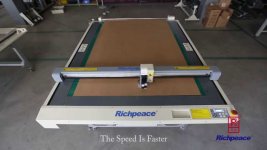petersonra
Senior Member
- Location
- Northern illinois
- Occupation
- Semi-retired engineer
I hate the big prints. Just too unwieldy. We do everything 24x36 and print it out as 11x17. No one has ever complained they cannot read them, plus they can be printed out by anyone that has a normal printer. Just have to be careful to use reasonable sized fonts so the text is readable.
Mechanical details are done so they print out 8.5x11 or 11x17. No reason they have to put fifty details on the same sheet and print it out on a huge piece of paper.
Our shop has big monitors to use for viewing the 3d drawings of the whole machine. A lot more useful then paper.
Much easier for our customers to print them out that way too. We no longer provide any paper copies of the drawings or manuals. They get a thumb drive.
Mechanical details are done so they print out 8.5x11 or 11x17. No reason they have to put fifty details on the same sheet and print it out on a huge piece of paper.
Our shop has big monitors to use for viewing the 3d drawings of the whole machine. A lot more useful then paper.
Much easier for our customers to print them out that way too. We no longer provide any paper copies of the drawings or manuals. They get a thumb drive.


